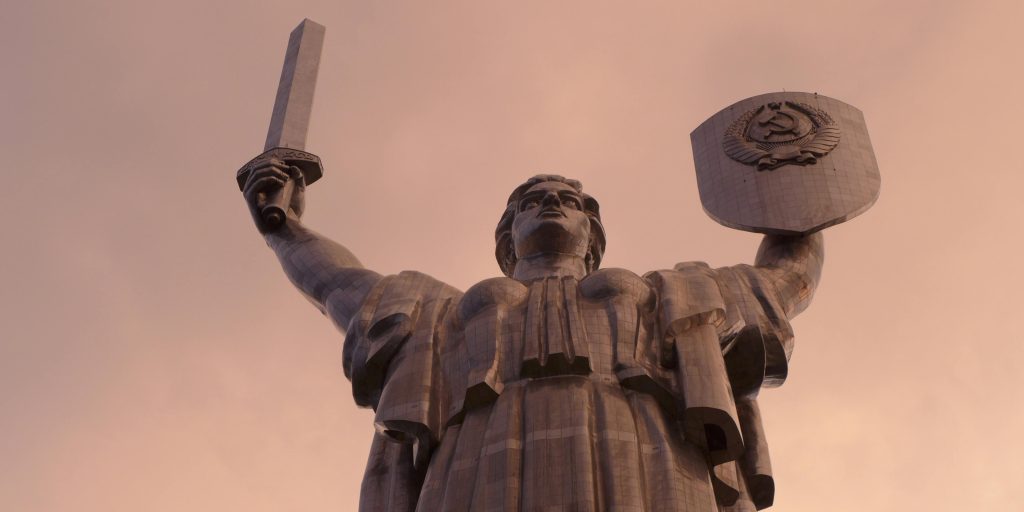Guidance note on social media usage
These guidelines have been developed to assist Press Council members. They are not binding and they do not extend the Press Code. No complaint may be lodged in terms of these guidelines.
Social media has become one of the primary tools through which journalists carry out their work. Whilst the advent of this technology has greatly expanded the means by which journalists can communicate directly with the public, it has also brought about interesting new challenges for journalists as well as their employers.
Many journalists have a significant personal following which is associated with their personal brand and there is a need to strike a balance between enabling them to use their personal voices and protecting the interests of the publication.
One of the difficult questions that arises in this regard is where to draw the line between a journalist’s private communications and their professional ones.
The Press Council has compiled this standard social media usage policy to assist its subscriber members to navigate this difficult area when formulating social media policies for their journalists.
The Press Council recognises that journalists, like all residents of South Africa, have a constitutional right to freedom of expression as well as the right to freedom of conscience, belief, thought and opinion. Indeed, there is a long tradition in the media of journalists expressing their views in the form of editorials and opinion pieces.
However, we also recognise the fact that our subscriber members have a legitimate interest in exercising editorial control over the content that is published by the journalists whom they employ, which is also a long-held practice in the industry.
In formulating this policy we have sought to strike a balance between these competing interests.
This policy needs to be interpreted and applied with due regard to the constitutional rights to freedom of expression as well as the right to freedom of conscience, belief, thought and opinion.
The policy addresses the fundamental issues that the Press Council believes should be addressed in such a policy from a journalistic point of view. If members wish to apply the policy to employees who are not journalists, aspects of the policy may need to be adapted.
This policy is issued as a guidance note by the Press Council and is intended to assist members to comply with the requirement in the Press Code that subscriber members must develop their own social media policies.
It is not compulsory for members of the Press Council to adopt this policy or to adopt every aspect of it.
Members are advised to consult widely and adopt a policy that is suitable for their organisation.
1. Introduction
1.1. This policy applies to all journalists who are full time employees of the company and to freelancers. [Drafting note: references to ‘the company’ throughout this document can be changed to the name of the publication or company.]
1.2. For purposes of this policy, social media is any website or application that enables users to create and share content, to participate in social networking or to have conversations over the internet. Examples of social media platforms include Facebook, X, LinkedIn, WeChat, WhatsApp, SnapChat, YouTube, Flickr, Wikipedia, Instagram, Pinterest, blogs and any section of a website that allows users to post comments.
1.3. This document applies to the private use of social media as well as use of any social media account that is operated on behalf of the company.
1.4. If you are unsure of any of the terms and conditions in this policy, you need to raise your concerns with your editor.
2. General Guidelines
2.1. You are personally responsible for all material that you post on social media. If a particular post is made under editorial supervision or is published on an official company social media account then the editor in charge is also required to take responsibility for that content.
2.2. The most important general rule to apply is that, if you would not publish a particular allegation, photo, video or opinion in an official story then it should not be shared on your social media profile. The best approach is to treat the online world in the same way you do the physical one, by using sound judgment and common sense.
2.3. The statements that you make and content that you share on social media, whether publicly or privately, could have an impact on your credibility as a journalist and by extension the credibility of the company.
This principle must inform all the content that you post on social media. Any content that damages the reputation of the company in respect of neutrality, fairness and credibility is not acceptable.
2.4. When using your personal social media account in a work capacity or operating a company owned social media account, you must ensure that all the content you post complies with the provisions of the Press Code.
2.5. Due to the public nature of the work that journalists do, it is not permissible for you to post content anonymously/under a pseudonym on social media.
2.6. You must clearly state on your social media accounts that the views expressed are your own and do not necessarily reflect the views of the company.
2.7. Always assume that members of the public who you interact with on social media are either aware that you are a journalist employed by the company or could easily ascertain that fact, even if it is not directly pertinent to your interactions with them.
2.8. Even when sharing material on a social media platform to which you have restricted access to certain individuals (for example a Facebook page which only your approved friends can see) or through a direct message, bear in mind that nothing on social media is truly private.
2.9. Always identify yourself as a journalist when soliciting views or comments from people which you intend to use to create content that will be published.
2.10. You may not include the name of the company or any of its publications as part of your private social media account name as this will create the impression that you are operating an official company account.
2.11. You must endeavour not to mix the personal and professional content on your social media accounts in a manner that creates confusion as to whether your personal content is endorsed by the company.
2.12. When you stop working at the company you must amend your social media profiles to make it clear that you are no longer an employee of the company.
2.13. Always keep in mind that the internet is permanent. Once information is published online, it is essentially part of a permanent record, even if you ‘remove/delete’ it later or attempt to make it anonymous someone may already have a copy of the original post. Therefore, think carefully before posting anything and always err on the side of caution.
2.14. If you make an error, be upfront about your mistake and correct it quickly. If you choose to modify an earlier post, make it clear that you have done so. Serious errors should be brought to the attention of the editor.
2.15. If any content which you shared on your social media page later turns out to be incorrect, any correction or apology that is published should also be shared on your social media page. This applies to content published by the company as well as content published by third parties which you shared.
3. Reputation management
3.1. Commentary on social media that brings the company into disrepute, whether intentionally or through negligence is unacceptable.
3.2. If you come across serious allegations against the company on social media that go beyond the usual criticism that media companies and journalists receive, bring it to the attention of your editor so that appropriate action can be taken.
3.3. If you comment on or discuss any issue online that directly relates to the company or any of its employees you must make it clear that you are speaking in your personal capacity and do not have authority to speak on behalf of the company.
It is only acceptable to speak on behalf of the company if (1) you have express written permission to do so or (2) doing so is a core part of your job, for example if you are the editor in chief.
4. Respect for other people on social media
4.1. Be respectful and considerate when you interact with people online. When disagreeing with others’ opinions or correcting their facts, keep it appropriate and polite, even if they are aggressive or disrespectful. In the case of a story or image that stirs significant controversy, the editor is likely the best person to reply, rather than the person who created the content.
4.2. If a person engages in threatening or abusive behaviour towards you, it is acceptable to block the person and report their conduct to the social media site.
4.3. Do not post anything that is unlawful, obscene, profane, pornographic, indecent, lewd, suggestive, harassing, threatening, abusive, inflammatory, fraudulent, or is otherwise objectionable for similar reasons.
4.4. If you post any allegations deemed to be defamatory, ensure that you have a clear legal defence. Don’t post defamatory allegations that would not be approved for publication.
4.5. If you post content that contains the private information of any person, you must ensure that doing so is in the public interest. Don’t post private information that would not be approved for publication.
4.6. It is unacceptable to engage in ‘doxing’ of any person for any reason. This includes publishing a person’s private contact details such as their home address, private email address, cell phone number or any unique identifier such as their ID number.
4.7. Do not post comments that contain hate speech or that disrespect or denigrate individuals on the basis of ethnicity, race, gender, sex, pregnancy, marital status, social origin, colour, sexual orientation, age, disability, religion, conscience, belief, culture, language or birth.
4.8. You must exercise exceptional care and consideration when posting content that concerns a child, posting content that identifies a child and when interacting with any person who you know or suspect could be a child on social media. Always bear in mind the legal and ethical restrictions that apply to identifying children.
4.9. We must never encourage people on social media to take risks on our behalf, for example by taking pictures or videos of an event or procuring information to send to us if doing so may place them at risk.
5. Bias and personal matters
5.1. It is impossible for the public to fully separate your personal preferences and biases from your work as a journalist. Any perception of bias may undermine your credibility as a journalist and, by extension, the credibility of the company when reporting on that matter.
In light of this, it is important to avoid as far as possible posting material that may create the perception that you have a personal bias (either for or against) a specific company, organisation, political party, political office bearer or social movement.
5.2. If you post a review on social media about any product or service which you either received free, at a significant discount, or were paid to review, this must be clearly stated in the post containing the review.
This principle applies even if the review does not relate directly to your job as a journalist, because members of the public may attribute credibility to your reviews based on your role as a journalist.
5.3. As far as possible, avoid raising personal grievances against any specific person, company or organisation via social media. Even if you state that the grievance is raised in your personal capacity, a public perception could be created that you are abusing your influence as a journalist employed by the company to draw attention to your concerns, thereby damaging your credibility and possibly that of the company.
6. Liking and friending
6.1. Friending, ‘liking’ or following political candidates or causes or joining groups relating to partisan causes on social media may create a perception of bias. As far as possible, ensure that you make this kind of contact with figures on both sides of controversial issues.
6.2. Avoid interacting with newsmakers on their public pages – for instance, commenting on their posts or entering into a war of words with them on social media. You will be held responsible for any such engagement that brings the company into disrepute.
7. Publication of content
7.1. As a general rule, any news or information that you become aware of, which is of the type that would ordinarily be published by the company (especially exclusive material), must primarily be published through the company’s online platforms rather than your personal social media account.
This rule exists to protect the company’s ability to curate content for its readers, listeners, or viewers, protect its commercial interests as a publisher and to respect the principle of editorial oversight with respect to the content that our journalists publish.
This principle must always be considered when deciding whether to post information on your social media account or publish it through an official channel.
7.2. You are encouraged to share content published on the company’s social media and online platforms on your personal social media account. However, this must be done through links that direct the public to the company’s online platforms.
7.3. Breaking news must first be published through the company’s official social media accounts or online platforms and not through your personal social media account unless exceptional circumstances warrant a departure from this rule or you are engaged in ‘live tweeting’ from a public event.
8. Sharing material posted by others
8.1. A significant part of the interaction on social media platforms involves passing on interesting content or linking to popular items. Do not blindly repost a link without looking carefully at the content first. The same applies to sharing material posted by another person or organisation, for example by retweeting.
8.2. Do not share content posted by another person or another publisher in a manner that creates the impression that you are endorsing the content unless you are sure that by doing so you are not breaching any aspect of this policy.
8.3. Do not share unverified allegations, rumours or hearsay. Even if the content has been widely shared on social media, your position as a journalist may create the impression that the allegation has been verified by you or has some credibility.
This applies even if your social media profile contains a general disclaimer such as ‘retweets are not endorsements’. If there is significant public interest in sharing information despite the fact that it has not been verified, the fact that it has not been verified should be clearly stated.
8.4. The dissemination of false information or so called ‘fake news’, including manipulated videos and photos on social media platforms, has become a significant problem. Always take reasonable steps to verify whether content such as videos, photos or articles that you are sharing from a third party are authentic.
8.5. If you are sharing content in order to report on it then you must make that clear in your post.
8.6. You must never simply lift quotes, photos or video from social networking sites and attribute them to the name on the profile or feed where you found the material. You must always take reasonable steps to verify the identity of the person behind the account and remain alive to the possibility of fake accounts.
8.7. Do not assume that you have permission to share material if it has been shared on a platform to which there is restricted access, for example a WhatsApp Group or closed Facebook page.
Even if large numbers of people have access to the restricted platform this does not mean that the originator of the post consents for the post to be published by a journalist. In such cases you must check with the originator of the post whether it is acceptable for you to share it. This principle may only be overridden in the public interest.
8.8. You will be held responsible for posting links or sharing inappropriate content posted by others.
9. Confidential information
9.1. You are not permitted to disclose confidential information about the company, i.e. any information that is not yet in the public domain. In particular, you may not disclose:
9.1.1. Details about any story that the company is working on that has not yet been published or unpublished details about any story that has already been published;
9.1.2. The financial position of the company;
9.1.3. Any potential or actual acquisition or sale of the company or any part thereof;
9.1.4. Any actual or potential campaign that has not yet been launched;
9.1.5. Legal or regulatory matters affecting the company;
9.1.6. Any legal dispute between the company and any person (including internal disciplinary matters); and
9.1.7. Any internal policy of the company.
10. Intellectual property
10.1. A copyright owner has certain rights e.g. the right to be credited as the creator of the work and to be compensated financially when another person uses the material. The holder of a trademark has similar rights. The fact that content has been posted online does not amount to a waiver of these rights.
10.2. Do not use copyrighted or trademarked material without obtaining the permission of the copyright or trademark holder, unless your use of the material amounts to fair use (which has a specific limited meaning in law).
10.3. Only use photos if you have the right to use them (from the photographed individuals and the photographer) or if the use amounts to fair use, for example using a publicly available Facebook profile photograph of a person to illustrate a story about that person.
10.4. Examples of material that may be protected by copyright include articles written by other people, photos, videos and songs. Trademarks include logos and slogans.
11. Enforcement of Policy
11.1. The company reserves the right to take action on any social media post that is brought to its attention which breaches this policy, regardless of whether the post was made in a private or public social media platform.
11.2. Any transgression of this policy is prohibited and could lead to disciplinary action and possible termination of your employment or your contract with the company.




